Stagnation Point Flow with Time-Dependent Bionanofluid Past a Sheet: Richardson Extrapolation Technique
Abstract
0. Highlights
- Validation of the general model has been achieved with the finite-difference coupled with the Richardson extrapolation and the shooting method in the Maple software.
- The far-field boundary conditions were chosen with the appropriate finite value to ensure that the numerical solution ideally approaches the asymptotic values.
- The state of shrinking sheet limits the rate of heat transfer and the density of the motile microorganisms in the stagnation region.
1. Introduction
2. Mathematical Formulation
3. Similarity Differential Equations
4. Physical Quantities
5. Computational Method and Validation
6. Results and Discussion
7. Conclusions
- The increment in Nb past a stretching or shrinking sheet increases the temperature of the bionanofluid temperature but decreases the nanoparticle concentration and the density of motile microorganisms,
- The enhancement in Nt improves the fluid temperature, concentration and the microorganism density in the stagnation region.
- The increment of Le affects the concentration of the nanoparticles, causing it to decrease.
- The increment of Pe and Lb decreases the density of motile microorganisms past a stretching or shrinking sheet.
- The microorganism diffusivity is high in the case the stretching sheet but low in the case of the shrinking sheet.
Author Contributions
Funding
Acknowledgments
Conflicts of Interest
Nomenclature
| Dimensional positive constant | |
| Unsteadiness parameter | |
| Dimensional constant | |
| Chemotaxis constant | |
| Nanoparticles concentration | |
| Skin friction coefficient | |
| Nanoparticle concentration at the stretching/shrinking surface | |
| Ambient nanoparticle concentration | |
| Brownian diffusion coefficient | |
| Diffusivity of microorganism | |
| Diffusivity coefficient | |
| Thermophoresis diffusion coefficient | |
| Thermal conductivity | |
| bioconvection Lewis number | |
| Concentration of the microorganisms | |
| Local density number of the motile microorganism | |
| Microorganisms at the sheet | |
| Microorganisms far from the sheet | |
| Brownian motion parameter | |
| Local Nusselt number | |
| Thermophoresis parameter | |
| Dimensionless Péclet number | |
| Prandtl number | |
| Local Reynolds number | |
| Local Sherwood number | |
| Temperature | |
| Dimensional time | |
| Surface temperature | |
| Ambient temperature | |
| Velocity of the sheet | |
| Maximum cell swimming speed | |
| Cartesian coordinates | |
| Velocity of the components | |
| Greek Letters | |
| Thermal diffusivity | |
| Similarity variable | |
| Dynamic viscosity | |
| Kinematic viscosity | |
| Density | |
| Nanoparticles heat capacity | |
| Base fluid heat capacity | |
| Stretching/Shrinking parameter | |
| Ratio of the effective heat capacitance of the nanoparticle to that of the base fluid | |
| Dimensionless temperature | |
| Dimensionless nanoparticle concentration | |
| Dimensionless microorganisms | |
| Dimensionless stream function | |
| Subscripts | |
| condition at the surface | |
| condition outside of boundary layer | |
| Superscript | |
| differentiation with respect to | |
References
- Wong, K.V.; Leon, O.D. Applications of nanofluids: Current and future. Adv. Mech. Eng. 2010, 2018, 1–11. [Google Scholar] [CrossRef]
- Choi, S.U.S.; Eastman, J.A. Enhancing thermal conductivity of fluids with nanoparticles. ASME Publ. Fed. 1995, 231, 99–106. [Google Scholar]
- Molina, J.; Rodríguez-Guerrero, A.; Louis, E.; Rodríguez-Reinoso, F.; Narciso, J. Porosity effect on thermal properties of Al-12 wt% Si/Graphite composites. Materials 2017, 10, 177. [Google Scholar] [CrossRef] [PubMed]
- Caccia, M.; Camarano, A.; Sergi, D.; Ortona, A.; Narciso, J. Wetting and Navier-Stokes equation – The manufacture of composite materials. Wetting Wettability 2015, 105–137. [Google Scholar]
- Buongiorno, J. Convective transport in nanofluids. J. Heat Trans-T ASME 2006, 128, 240–250. [Google Scholar] [CrossRef]
- Mahian, O.; Kolsi, L.; Amani, M.; Estellé, P.; Ahmadi, G.; Kleinstreuer, C.; Marshall, J.S.; Siavashi, M.; Taylor, R.A.; Niazmand, H.; et al. Recent advances in modeling and simulation of nanofluid flows-Part I: Fundamentals and theory. Phys. Rep. 2019, 790, 1–48. [Google Scholar] [CrossRef]
- Mahian, O.; Kolsi, L.; Amani, M.; Estellé, P.; Ahmadi, G.; Kleinstreuer, C.; Marshall, J.S.; Taylor, R.A.; Abu-Nada, E.; Rashidi, S.; et al. Recent advances in modelling and simulation of nanofluid flows-Part II: Applications. Phys. Rep. 2019, 791, 1–59. [Google Scholar] [CrossRef]
- Tlili, I. Effects MHD and Heat Generation on Mixed Convection Flow of Jeffrey Fluid in Microgravity Environment over an Inclined Stretching Sheet. Symmetry 2019, 11, 438. [Google Scholar] [CrossRef]
- Goodarzi, M.; Tlili, I.; Tian, Z.; Safaei, M.R. Efficiency assessment of using graphene nanoplatelets-silver/water nanofluids in microchannel heat sinks with different cross-sections for electronics cooling. Int. J. Numer. Methods Heat Fluid Flow 2019. submitted for publication. [Google Scholar] [CrossRef]
- Afridi, M.I.; Tlili, I.; Goodarzi, M.; Osman, M.; Alam Khan, N. Irreversibility Analysis of Hybrid Nanofluid Flow over a Thin Needle with Effects of Energy Dissipation. Symmetry 2019, 11, 663. [Google Scholar] [CrossRef]
- Tlili, I.; Alkanhal, T.A. Nanotechnology for water purification: Electrospun nanofibrous membrane in water and wastewater treatment. J. Water Reuse Desalin. 2019, 9, 232–248. [Google Scholar] [CrossRef]
- Tlili, I.; Khan, W.A.; Ramadan, K. MHD Flow of Nanofluid Flow Across Horizontal Circular Cylinder: Steady Forced Convection. J. Nanofluids 2019, 8, 179–186. [Google Scholar] [CrossRef]
- Tlili, I.; Khan, W.A.; Ramadan, K. Entropy Generation Due to MHD Stagnation Point Flow of a Nanofluid on a Stretching Surface in the Presence of Radiation. J. Nanofluids 2018, 7, 879–890. [Google Scholar] [CrossRef]
- Sakiadis, B.C. Boundary-layer behavior on continuous solid surfaces: I. Boundary-layer equations for two-dimensional and axisymmetric flow. AICHE J. 1961, 7, 26–28. [Google Scholar] [CrossRef]
- Sakiadis, B.C. Boundary-layer behavior on continuous solid surfaces: II. The boundary layer on a continuous flat surface. AICHE J. 1961, 7, 221–225. [Google Scholar] [CrossRef]
- Crane, L.J. Flow past a stretching plate. Z. Angew. Math. Phys. 1970, 21, 645–647. [Google Scholar] [CrossRef]
- Carragher, P.; Crane, L.J. Heat transfer on a continuous stretching sheet. Z. Angew. Math. Phys. 1982, 62, 564–565. [Google Scholar] [CrossRef]
- Pop, I.; Naganthran, K.; Nazar, R. Numerical solutions of non-alignment stagnation point flow and heat transfer over a stretching/shrinking surface in a nanofluid. Int. J. Numer. Method Heat 2016, 26, 1747–1767. [Google Scholar] [CrossRef]
- Pop, I.; Naganthran, K.; Nazar, R.; Ishak, A. The effect of vertical throughflow on the boundary layer flow of a nanofluid past a stretching/shrinking sheet: A revised model. Int. J. Numer. Method Heat 2017, 27, 1910–1927. [Google Scholar] [CrossRef]
- Jusoh, R.; Nazar, R.; Pop, I. Flow and heat transfer of magnetohydrodynamic three-dimensional Maxwell nanofluid over a permeable stretching/shrinking surface with convective boundary conditions. Int. J. Mech. Sci. 2017, 124, 166–173. [Google Scholar] [CrossRef]
- Tlili, I.; Khan, W.A.; Khan, I. Multiple slips effects on MHD SA-Al2O3 and SA-Cu non-Newtonian nanofluids flow over a stretching cylinder in porous medium with radiation and chemical reaction. Results Phys. 2018, 8, 213–222. [Google Scholar] [CrossRef]
- Tlili, I.; Hamadneh, N.N.; Khan, W.A. Khan. Thermodynamic Analysis of MHD Heat and Mass Transfer of Nanofluids Past a Static Wedge with Navier Slip and Convective Boundary Conditions. Arab. J. Sci. Eng. 2018, 4, 1–13. [Google Scholar] [CrossRef]
- Tlili, I.; Hamadneh, N.N.; Khan, W.A.; Atawneh, S. Thermodynamic analysis of MHD Couette–Poiseuille flow of water-based nanofluids in a rotating channel with radiation and Hall effects. J. Ther. Anal. Calorim. 2018, 132, 1899–1912. [Google Scholar] [CrossRef]
- Waqar, A.; Khan, A.M.; Rashad, M.M.M.; Abdou, I.T. Natural bioconvection flow of a nanofluid containing gyrotactic microorganisms about a truncated cone. Eur. J. Mech. -B/Fluids 2019, 75, 133–142. [Google Scholar] [CrossRef]
- Khalid, A.; Khan, A.; Shafie, S.; Tlili, I.; Khan, I. Case study of MHD blood flow in a porous medium with CNTS and thermal analysis. Case Stud. Therm. Eng 2018, 12, 374–380. [Google Scholar] [CrossRef]
- Bidin, B.; Nazar, R. Numerical solution of the boundary layer flow over an exponentially stretching sheet with thermal radiation. Eur. J. Sci. Res. 2009, 33, 710–717. [Google Scholar]
- Ghasemian, A.; Dinarvand, S.; Adamian, A.; Sheremet, M.A. Unsteady General Three-Dimensional Stagnation Point Flow of a Maxwell/Buongiorno Non-Newtonian Nanofluid. J. Nanofluids 2019, 8, 1544–1559. [Google Scholar] [CrossRef]
- Kandasamy, R.; Hashim, I. Effect of chemical reaction, heat and mass transfer on nonlinear boundary layer past a porous shrinking sheet in the presence of suction. Nucl. Eng. Des. 2010, 240, 933–939. [Google Scholar]
- Davey, A. Boundary-layer flow at a saddle point of attachment. J. Fluid Mech. 1961, 10, 593–610. [Google Scholar] [CrossRef]
- Goldstein, S. On backward boundary layers and flow in converging passages. J. Fluid Mech. 1965, 21, 33–45. [Google Scholar] [CrossRef]
- Hill, N.A.; Pedley, T.J. Bioconvection. Fluid. Dyn. Res. 2005, 37, 1–20. [Google Scholar] [CrossRef]
- Pedley, T.J.; Kessler, J.O. The orientation of spheroidal microorganisms swimming in a flow field. Proc. R. Soc. Lond. 1987, 231, 47–70. [Google Scholar]
- Pedley, T.J.; Hill, N.A.; Kessler, J.O. The growth of bioconvection patterns in a uniform suspension of gyrotactic microorganisms. J. Fluid Mech. 1988, 195, 223–237. [Google Scholar] [CrossRef] [PubMed]
- Kessler, J.O. Hydrodynamic focusing of motile algal cells. Nature 1985, 313, 218–220. [Google Scholar] [CrossRef]
- Kessler, J.O. Co-operative and concentrative phenomena of swimming micro-organisms. Contemp. Phys. 1985, 10, 202–210. [Google Scholar] [CrossRef]
- Hill, N.A.; Pedley, T.J.; Kessler, J.O. Growth of bioconvection patterns in a suspension of gyrotactic microorganisms in a layer of finite depth. J. Fluid Mech. 1989, 208, 509–543. [Google Scholar] [CrossRef]
- Ghorai, S.; Hill, N.A. Development and stability of gyrotactic plumes in bioconvection. J. Fluid Mech. 1999, 400, 1–31. [Google Scholar] [CrossRef]
- Ghorai, S.; Hill, N.A. Wavelengths of gyrotactic plumes in bioconvection. Bull. Math. Biol. 2000, 62, 429–450. [Google Scholar] [CrossRef]
- Ghorai, S.; Hill, N.A. Gyrotactic bioconvection in three dimensions. Phys. Fluid 2007, 19, 054107. [Google Scholar] [CrossRef]
- Hillesdon, A.; Pedley, T.J. Bioconvection in suspensions of oxytactic bacteria: Linear theory. J. Fluid Mech. 1996, 324, 223–259. [Google Scholar] [CrossRef]
- Hopkins, M.M.; Fauci, L.J. A computational model of the collective fluid dynamics of motile micro-organisms. J. Fluid Mech. 2002, 455, 149–174. [Google Scholar] [CrossRef]
- Kuznetsov, A.V. The onset of bioconvection in a suspension of gyrotactic microorganisms in a fluid layer of finite depth heated from below. Int. Commun. Heat Mass Transf. 2005, 32, 574–582. [Google Scholar] [CrossRef]
- Zeng, L.; Pedley, T.J. Distribution of gyrotactic micro-organisms in complex three-dimensional flows. Part 1. Horizontal shear flow past a vertical circular cylinder. J. Fluid Mech. 2018, 852, 358–397. [Google Scholar] [CrossRef]
- Sheremet, M.; Grosan, T.; Pop, I. MHD free convection flow in an inclined square cavity filled with both nanofluids and gyrotactic microorganisms. Int. J. Numer. Method Heat 2019. submitted for publication. [Google Scholar] [CrossRef]
- Sheremet, M.A.; Pop, I. Thermo-bioconvection in a square porous cavity filled by oxytactic microorganisms. Transp. Porous Med. 2014, 103, 191–205. [Google Scholar] [CrossRef]
- Kuznetsov, A.V. The onset of nanofluid bioconvection in a suspension containing both nanoparticles and gyrotactic microorganisms. Int. Commun. Heat Mass Transf. 2010, 37, 1421–1425. [Google Scholar] [CrossRef]
- Zaimi, K.; Ishak, A.; Pop, I. Stagnation-point flow toward a stretching/shrinking sheet in a nanofluid containing both nanoparticles and gyrotactic microorganisms. J. Heat Transf. 2014, 136, 041705. [Google Scholar] [CrossRef]
- Ali, F.; Zaib, A. Unsteady flow of an Eyring-Powell nanofluid near stagnation point past a convectively heated stretching sheet. Arab. J. Basic Appl. Sci. 2019, 26, 215–224. [Google Scholar] [CrossRef]
- Singh, M.K.; Natesan, S. Richardson extrapolation technique for singularly perturbed system of parabolic partial differential equations with exponential boundary layers. Appl. Math. Comput. 2018, 333, 254–275. [Google Scholar] [CrossRef]
- Ibrahim, W.; Shankar, B.; Nandeppanavar, M.M. MHD stagnation point flow and heat transfer due to nanofluid towards a stretching sheet. Int. J. Heat Mass Transf. 2013, 56, 1–9. [Google Scholar] [CrossRef]
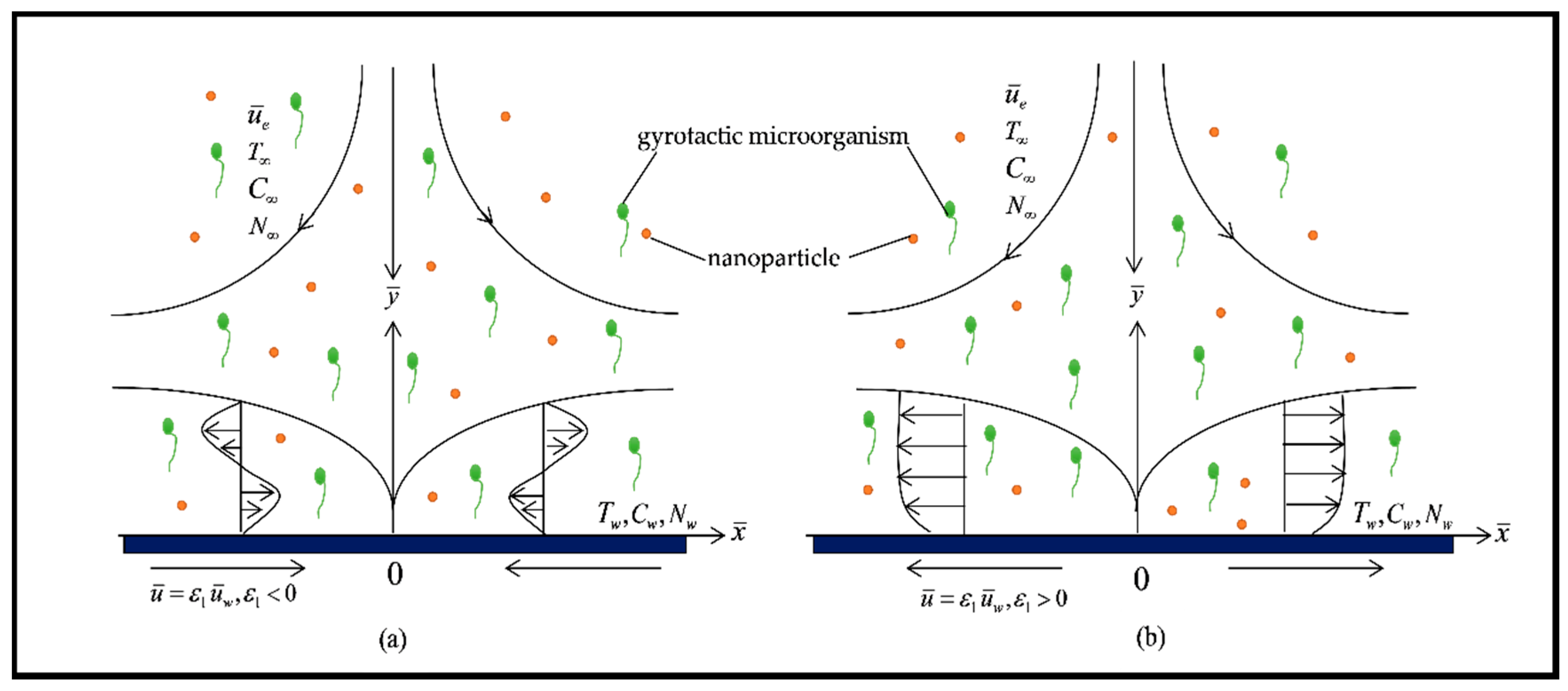
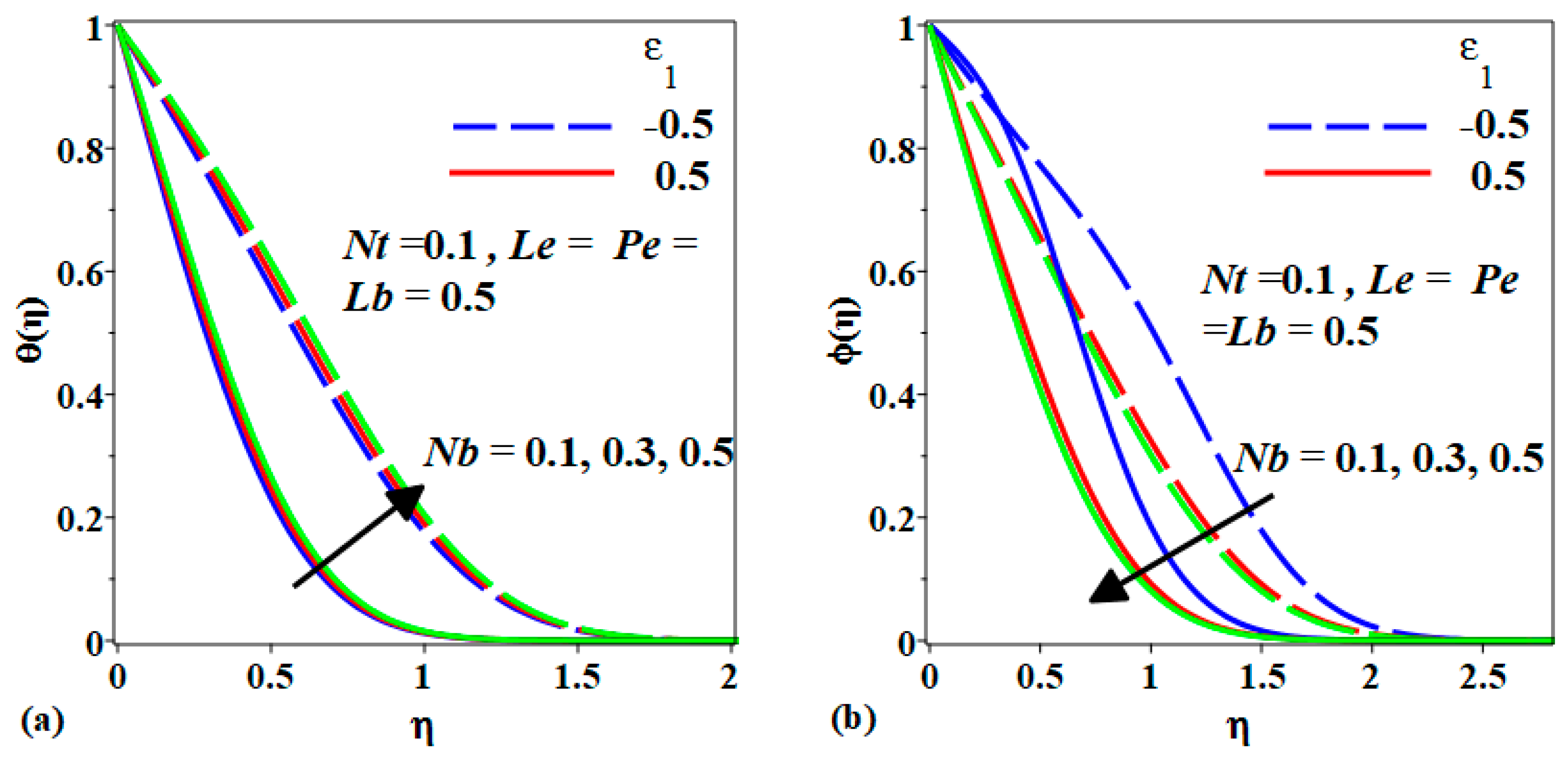
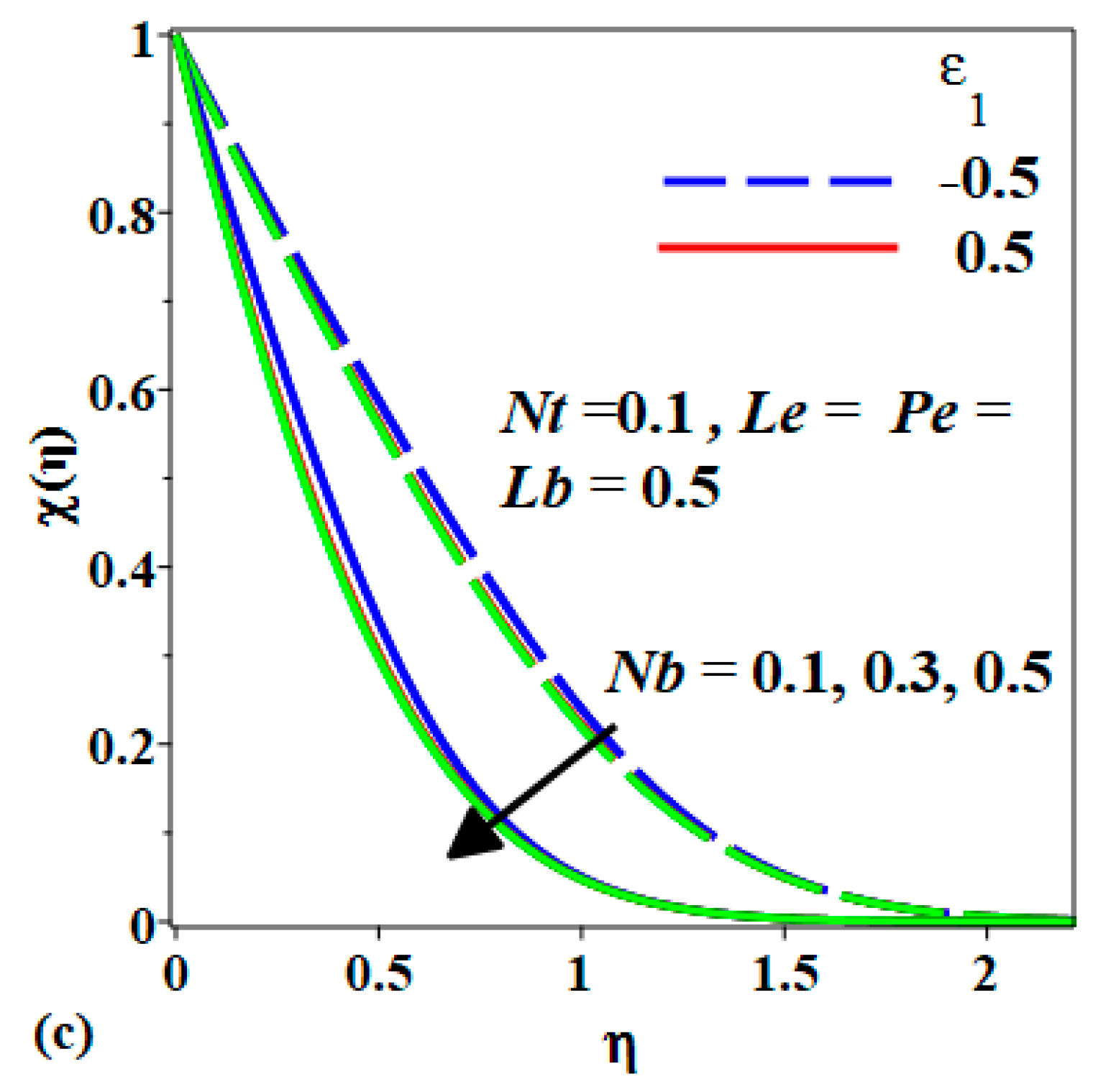
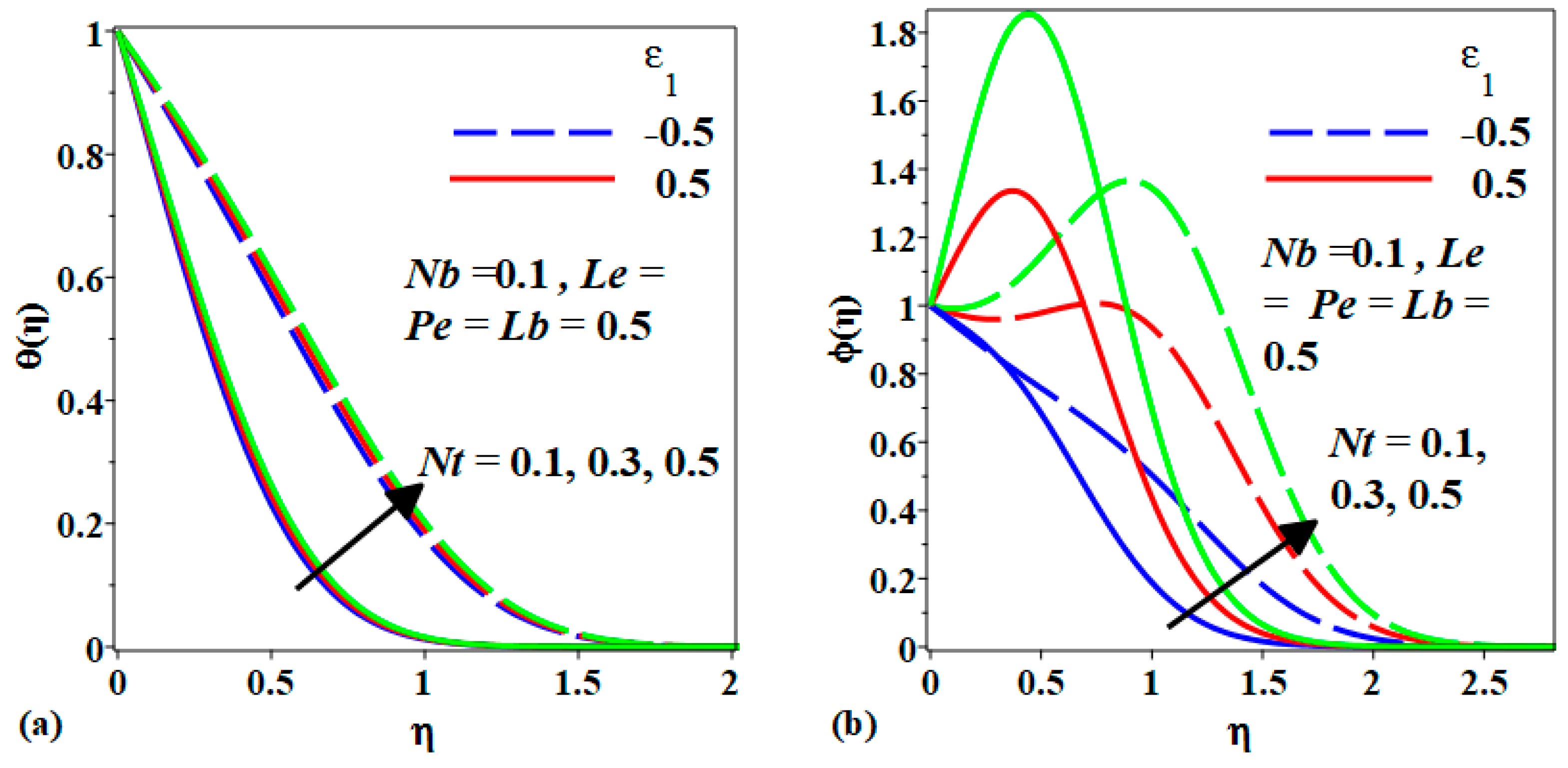
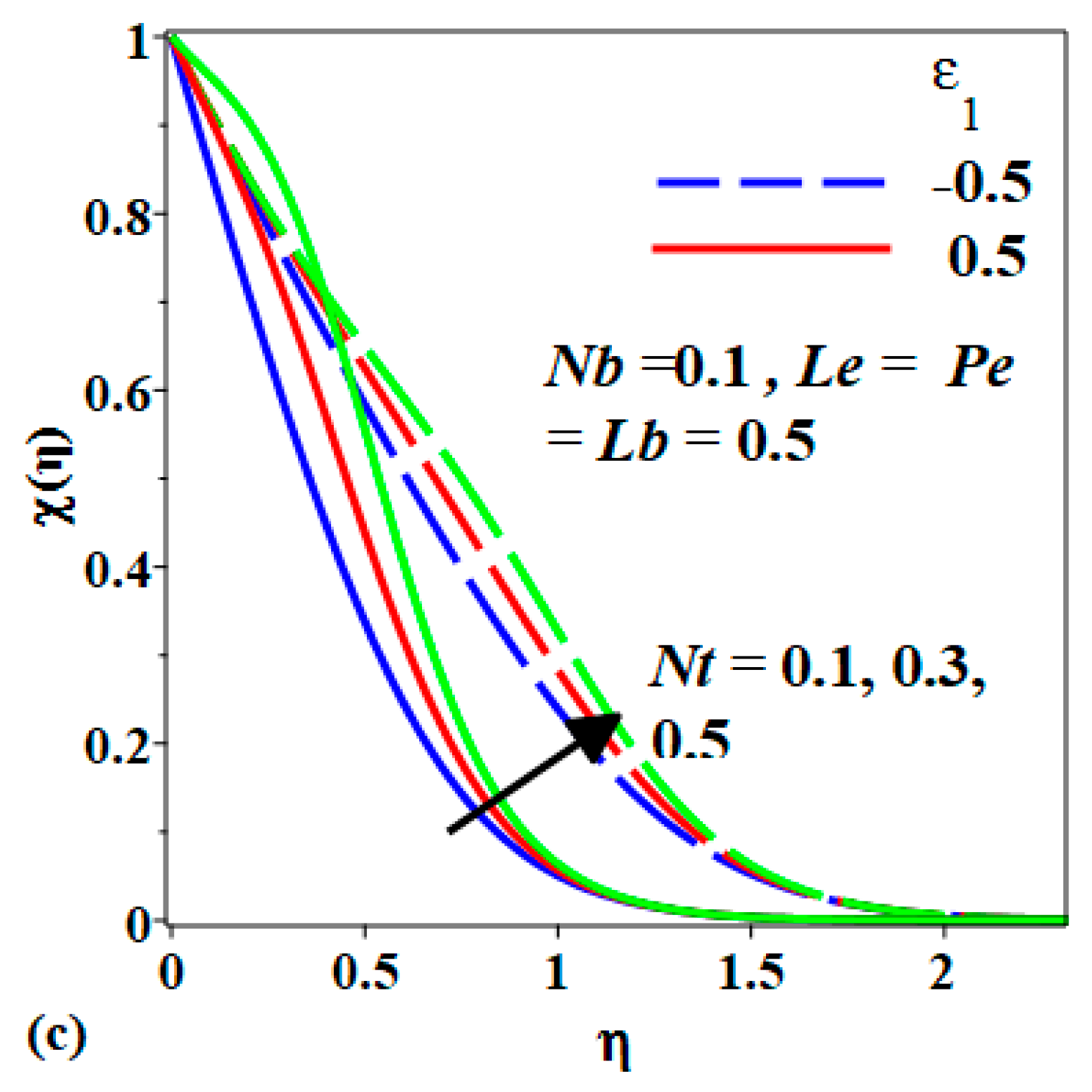
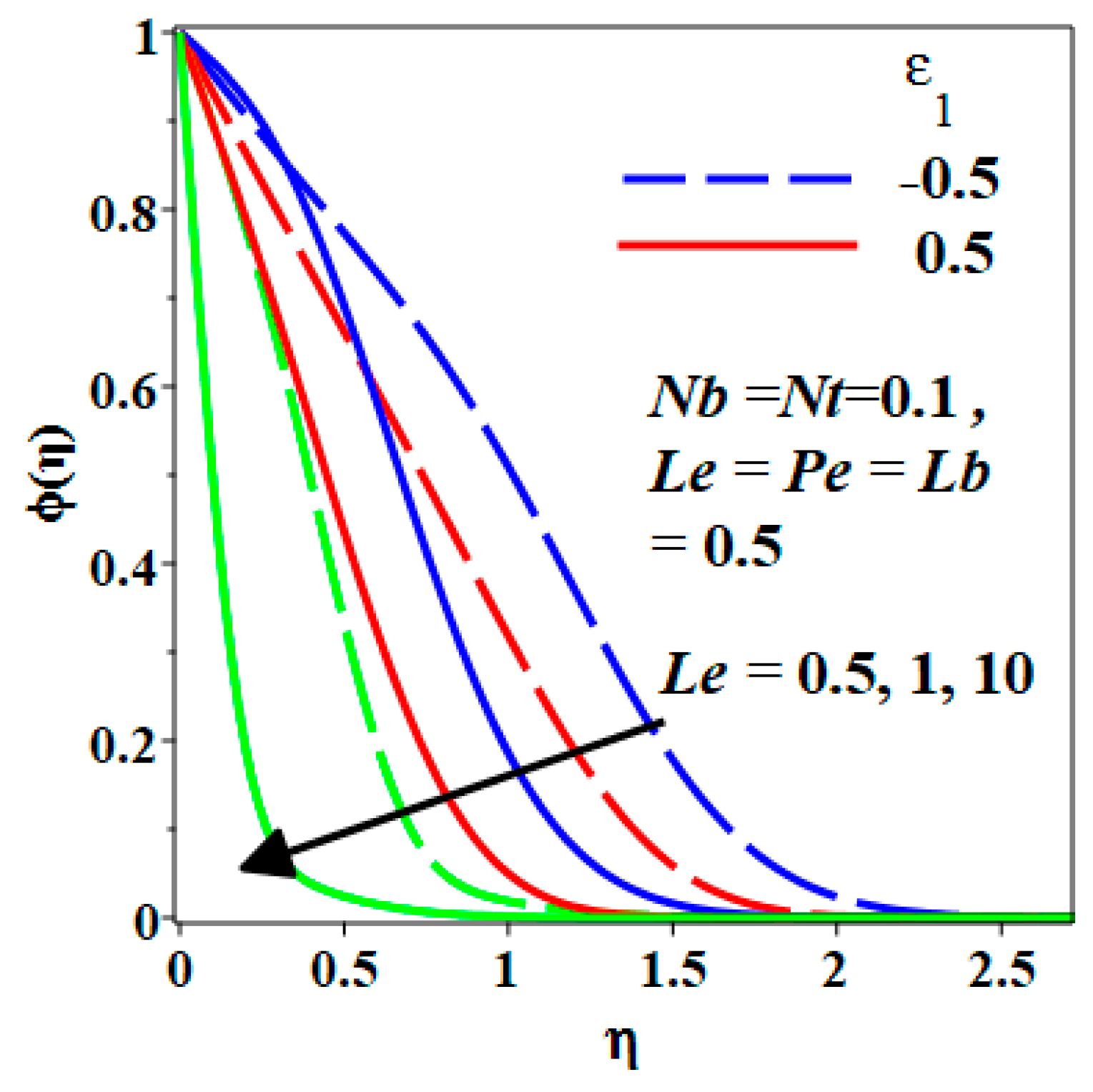
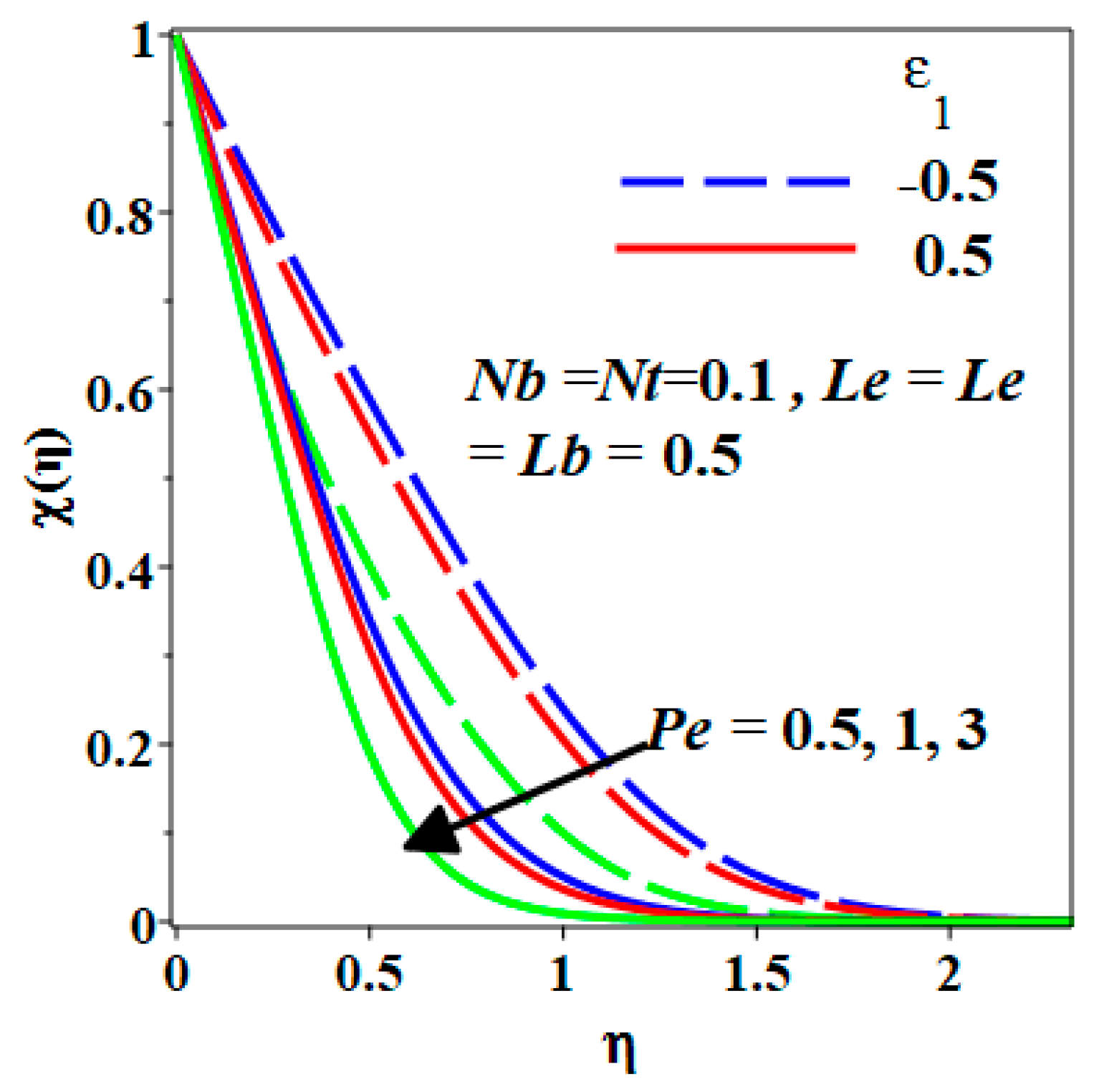
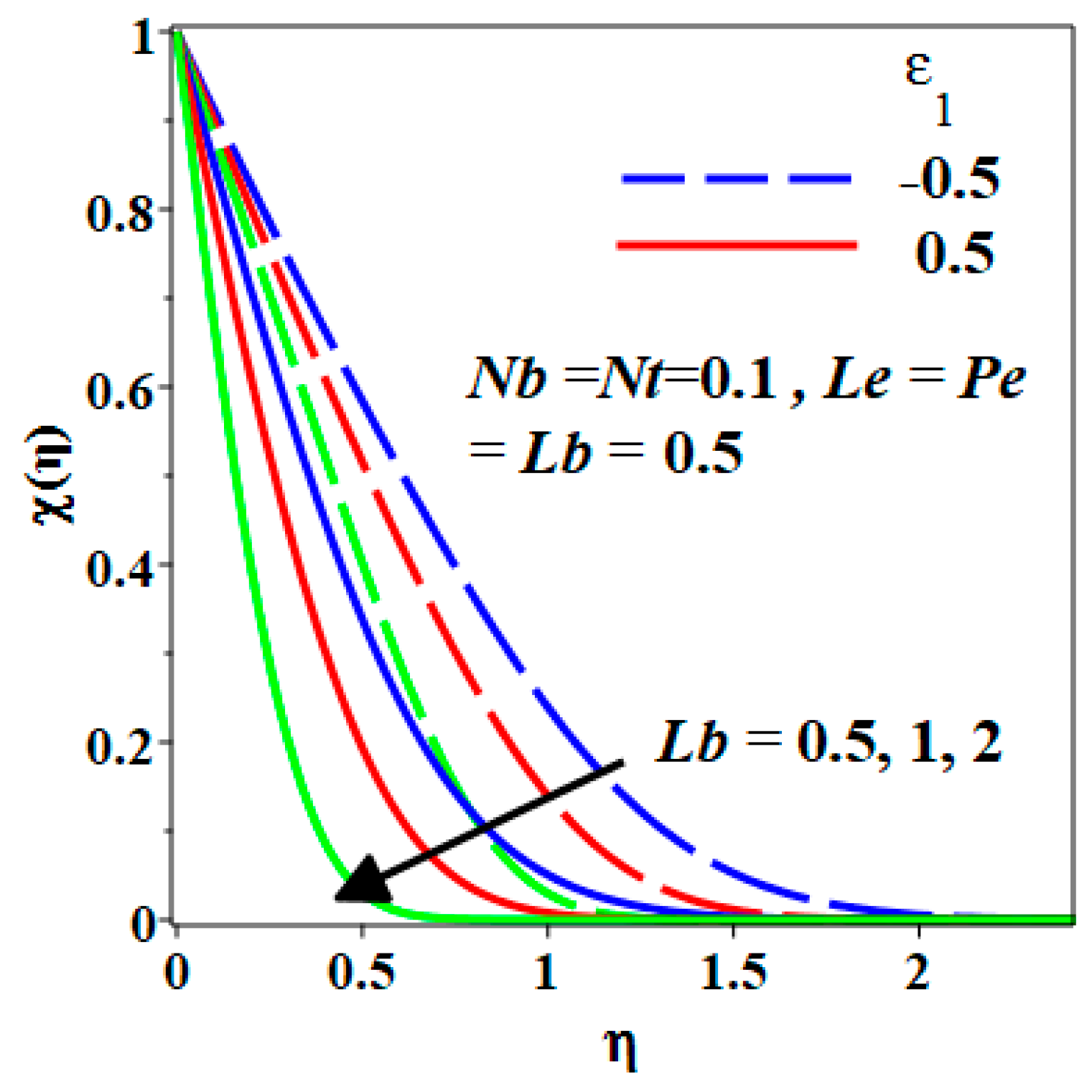
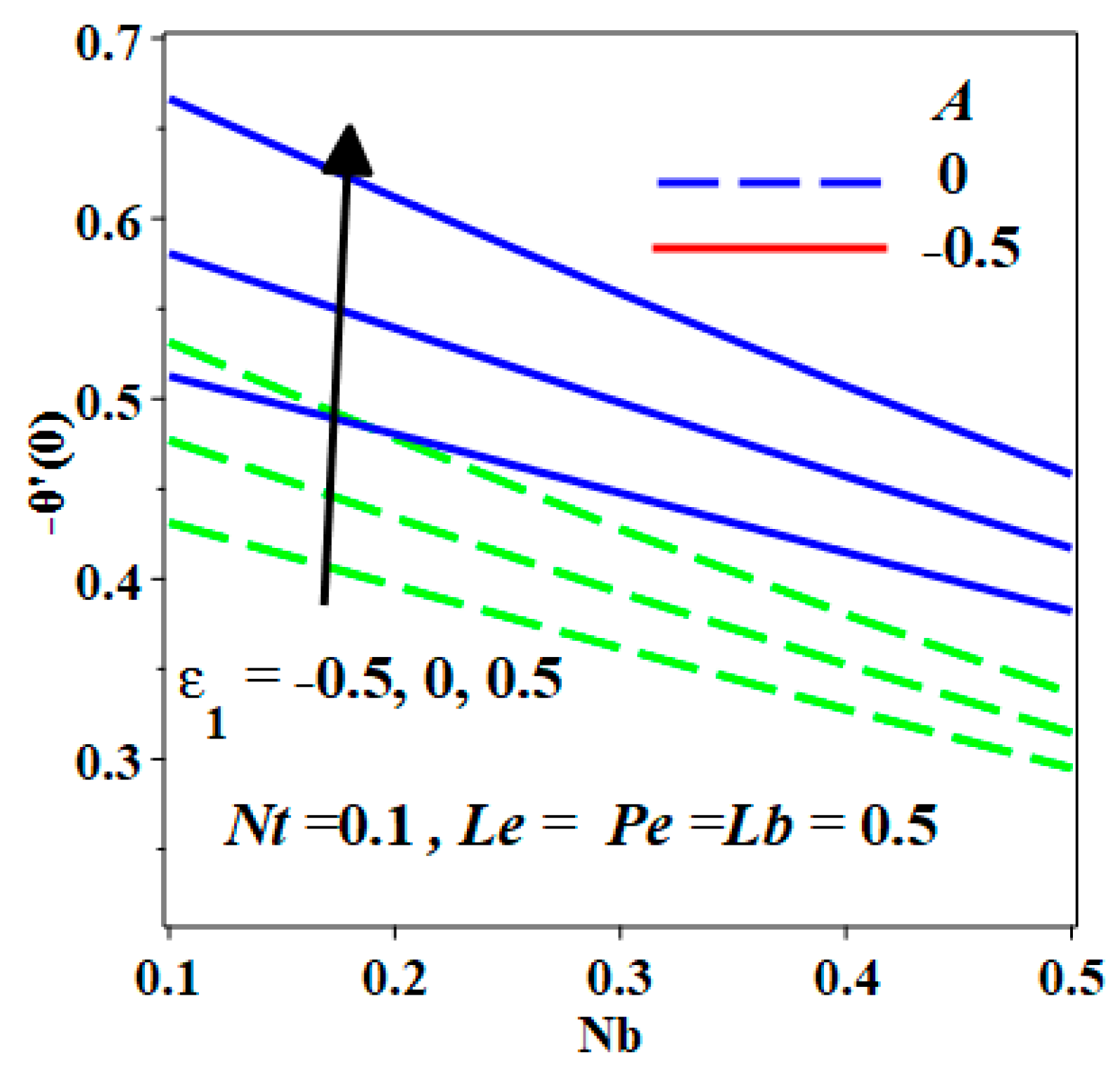
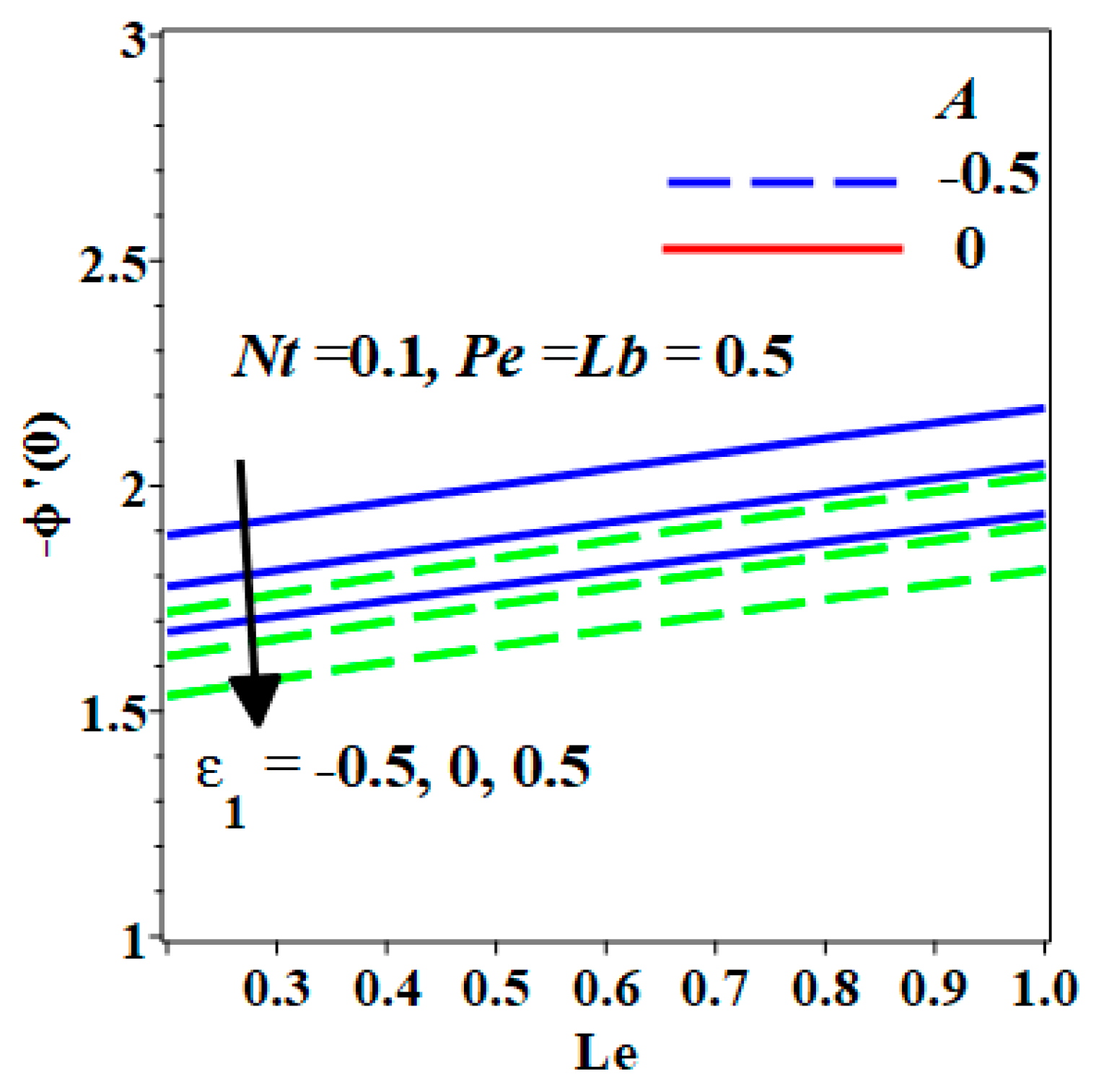
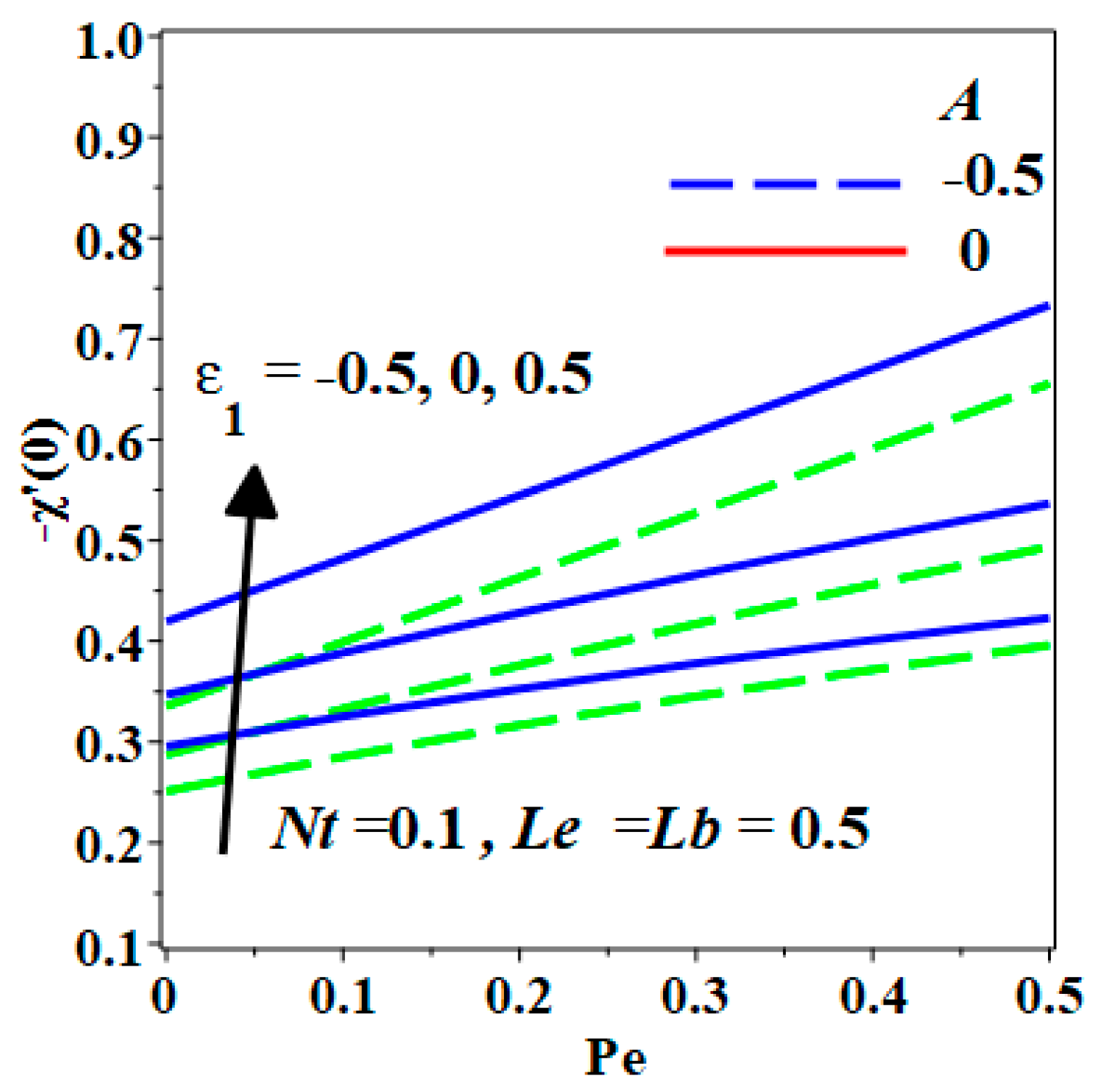
© 2019 by the authors. Licensee MDPI, Basel, Switzerland. This article is an open access article distributed under the terms and conditions of the Creative Commons Attribution (CC BY) license (http://creativecommons.org/licenses/by/4.0/).
Share and Cite
Naganthran, K.; Basir, M.F.M.; Alharbi, S.O.; Nazar, R.; Alwatban, A.M.; Tlili, I. Stagnation Point Flow with Time-Dependent Bionanofluid Past a Sheet: Richardson Extrapolation Technique. Processes 2019, 7, 722. https://doi.org/10.3390/pr7100722
Naganthran K, Basir MFM, Alharbi SO, Nazar R, Alwatban AM, Tlili I. Stagnation Point Flow with Time-Dependent Bionanofluid Past a Sheet: Richardson Extrapolation Technique. Processes. 2019; 7(10):722. https://doi.org/10.3390/pr7100722
Chicago/Turabian StyleNaganthran, Kohilavani, Md Faisal Md Basir, Sayer Obaid Alharbi, Roslinda Nazar, Anas M. Alwatban, and Iskander Tlili. 2019. "Stagnation Point Flow with Time-Dependent Bionanofluid Past a Sheet: Richardson Extrapolation Technique" Processes 7, no. 10: 722. https://doi.org/10.3390/pr7100722
APA StyleNaganthran, K., Basir, M. F. M., Alharbi, S. O., Nazar, R., Alwatban, A. M., & Tlili, I. (2019). Stagnation Point Flow with Time-Dependent Bionanofluid Past a Sheet: Richardson Extrapolation Technique. Processes, 7(10), 722. https://doi.org/10.3390/pr7100722






